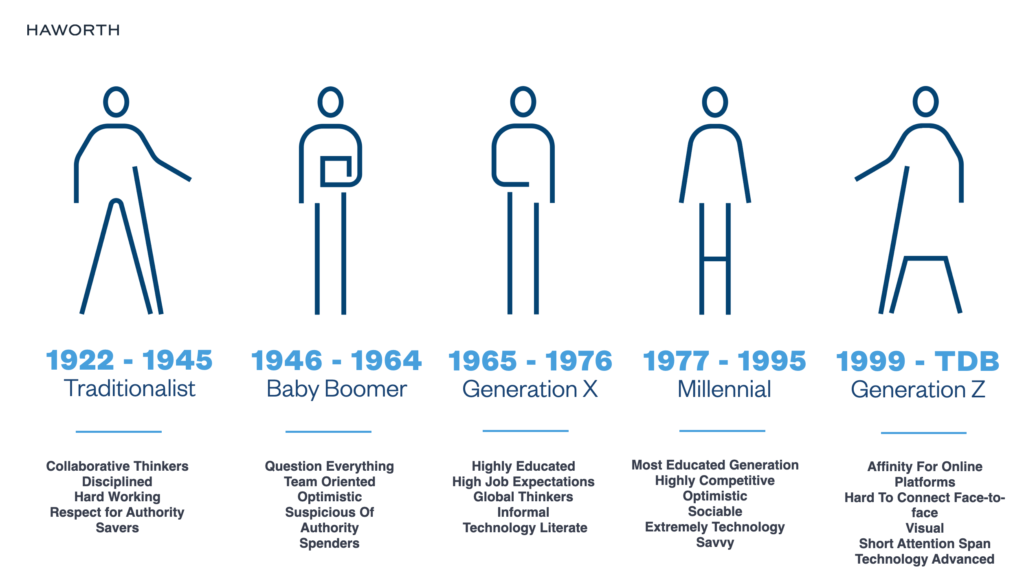Creating an atmosphere where team collaboration and customer service are at an all-time high is a difficult undertaking as more people choose to work remotely. With law firms attempting to strike a balance between returning to the office “part-time,” i.e. adopting a hybrid work model, the element of safety and comfort must be considered all within the framework of preserving the company culture while delivering results for clients.
Ensuring employees are confident in returning to the workplace requires supporting their physical, emotional, and cognitive wellbeing. This is where the evolution of law firm office design comes into play. Transforming a law firm into a flexible space means asking yourself not only how the workplace needs to adapt in appearance, but also how protocols and space must shift in order to create a safe space for clients seeking your services.
Read on to learn the main challenges law firms face in reshaping the way legal workspaces operate.
Challenges Law Firm Design Must Overcome
As a result of the global pandemic, law firm employees were forced to work from home, while the firm’s owners worked to maintain financial stability. Like most industries, the transition to remote employment was relatively simple. Nonetheless, law firm partners are considering the long-term viability of large remote work teams. Before making a permanent change, it is important to understand the pros and cons to working remotely.
On one hand, we live in a day and age where employees have the technology to work anywhere. Verbal and nonverbal communication between fellow colleagues and supervisors is purposeful and underscores the value of trust. Employees start their day in a less frantic mindset as they no longer wake up early to sit in traffic, focus work time has increased, and across all generations there is evidence that work teams have increased efficiency.
In contrast, working from home can quickly become a lifestyle of living at work. Work-life balance becomes difficult to achieve and extended work being done in furniture meant for lounging or short timeframes can quickly take a toll on employee health. As working in isolation grows there is concern around connection to firm culture and these are just the tip of the iceberg. The infrequency of spur of the moment conversation has led to a decline in innovation and team-based problem solving. Not to mention the heightened need to increase investment to maintain technological security for both clients and staff has many law firms struggling with what’s next.
The pros and cons of law firms working remotely can go on and on. The real solution lies in addressing three challenges legal workplaces face:
- Technology innovations
- Demographics changes and how that impacts the workforce
- Shifts in consumer behavior patterns
Once law firm owners understand the imperativeness of bringing their office into the new day and age of working, they can cultivate a positive workplace culture for their employees.
Technology Requirements For Legal Professionals
As of 2019, 95% of law firms with 100+ attorneys reportedly telecommute on occasion, with the stats for 2020 and beyond still being compiled. We can only assume that this number has almost certainly increased due to the pandemic. As a result, the dire need to implement cyber security measures is essential to sustaining operations. A data leak could end any law firm, large or small. Equipping employees with technological systems and cybersecurity protocols is critical as firms explore the next steps in transitioning employees to hybrid or fully remote work models.
Artificial intelligence, or AI, is another component of improving technology to support employees. This tool streamlines administrative functions such as reviewing documents during litigation, analyzing contracts, general research, and even case outcome predictions. Innovative technology such as this can bridge the gap between law firms seeking to protect financial interest and providing high quality legal counsel services.
Failing to equip your employees with necessities like cybersecurity and AI can hinder their overall work performance and day-to-day experience. Technology is key to attracting and retaining talent at every level – from secretarial and administrative positions to leading attorneys and supporting staff. How can you expect people to work from home if they lack the necessary technology? This is what makes upgrading technological systems a prerequisite if firms wish to succeed in a post-pandemic world. Without this foundation, navigating through meetings, case research, and internal communications becomes difficult and frustrating.
All in all, how your firm is structured influences people’s career progression and continuous learning. Additionally, it determines how you attract and retain talent in the years ahead – the driving force for new business models to come.
Different Demographics Want Different Workspaces
Among the many firsts witnessed over the last two years is the fact that, for the first time in U.S. history, five generations are working alongside each other in the legal profession. While this crossover of demographics has significant advantages in terms of passing down experience and best practices to younger attorneys, it also presents a challenge of creating a supportive workspace that nurtures the various needs each generation brings to the table. Technologically-savvy Gen Zers may thrive when it comes to telecommuting, while Traditionalists and Baby Boomers may struggle with regular video calls and basic functions that AI can assist with.
However, reimagining legal workspaces goes beyond technological capabilities. Boomers have been conditioned to conform to hierarchical environments, which were passed down from Traditionalists before them. Meanwhile, Millennial attorneys know their worth and negotiate, in their own way, for private offices. The status that comes with making it to the C-Suite of the law firm fell to the back burner during the pandemic. Millennials with children continuously benefit from working remotely for obvious reasons.
As a result, many law firms are questioning the necessity of having private offices. Is it worth the investment if younger generations employees want to work from home as their older colleagues prepare to retire?
How Consumer Behavior Is Changing The Legal Marketplace
The pandemic altered consumer behavior, and legal offices are not immune to these changes. Legal marketplaces are changing thanks to assistance from non-lawyer professionals:
- Legal document preparers
- Self-help websites
- Virtual assistance
- Offshore legal vendors
Outsourcing workload to third parties opens a door of opportunity in reshaping the client experience. According to GrowthPlay, there are Six Pillars Of Client Experience law firms can utilize:
- Relationship: intimacy and human connection
- Knowledge: deepen lawyers’ understanding of client’s business
- Communication: optimize the client’s virtual experience
- Appreciation: individual, client, team, and firmwide
- Feedback: institutionalize and add structure
- Billing/fees: win-win financial solutions
How your firm measures on each pillar may lead to a better understanding of how the workspace can support or impede the overall mission. In the end we know a legal workspace is so much more than an “office”. The environment is a tool to engage, recruit, and establish brand equity… But how? What can be done to these environments to successfully showcase values, missions, goals, and ultimately culture?
This is where leveraging space will create a positive employee and customer experience.
Leveraging Space to Create Positive Experiences
Long gone are the days of stale, blank offices with dusty filing cabinets and broken coffee machines. The new brand experience is a multifaceted solution that both maintains financial efficiencies and promotes employee well-being. As law firms prepare for 2023, employee experience should be a top priority as each employee ultimately delivers the positive client experience. In the end it comes down to finding the right partner to help ideate what experience works for your firm.
Space utilization strategies are key to achieving financial goals, reducing square footage costs, and providing opportunities for employees to feel supported. However, in addition to addressing the physical space we also must be mindful of these three human values which directly contribute to overall employee health and well being:
- Cognitive: doing your mind’s best work
- Physical: supporting your corporal needs
- Emotional: nurturing your psychological state
As humans, this is simply what we require in order to function effectively – no matter where we end up working that day. Workplaces are much more than just a place for employees to spend nine hours a day. Instead, consider what your firm can do to relieve stress, provide security, and improve overall performance. What does each team or department within your firm need in order to succeed? Determining the answers to these questions will help you adjust your new office layout and how you can implement a fresh work model that sets everyone up for success.
Live Design Reimagines Your Legal Workspace In Real Time
There is no exact formula for how law firms can, completely or partially, transition their workspaces to meet the needs of today’s employees and client base. But what decision makers can do is take a step back and assess the needs versus the wants as they prioritize where to start in the evolution of the firm. Technological upgrades are a must. Not only for cybersecurity, but also for creating efficient workflows using resources such as AI.
Different generations have mixed feelings about technology and the value it brings to daily operations. This impacts how they think and feel about their own careers, which can ultimately influence whether they stay or leave the firm. Aside from technology, there are many advantages optimized workspaces provide for every generation, from Millennials needing to pick up their children from school to Boomers requiring extra ergonomic support. Not to mention how outsourcing various duties to third parties improves working experiences for all. Less in-house employees means less space is required to maintain sufficient operations and client service. If you’re unsure of how to maximize on your space strategy, know that you can partner with a commercial space planning expert to help guide you towards a reimagined workspace.
King Business Interiors not only assists law firms with commercial and home office furniture needs, but we also specialize in live design space planning services that handle every aspect of evolving your workspace to embrace increased technology platforms or improve cultural alignment while bringing life to your firm’s brand identity. Contact us today to schedule your own on-site consultation and get your firm ready for 2023!




